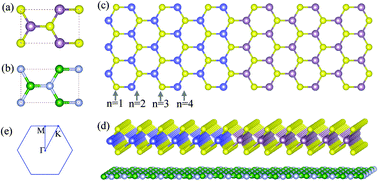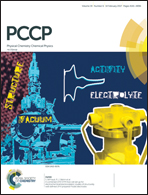Characteristics of lateral and hybrid heterostructures based on monolayer MoS2: a computational study†
Abstract
Novel MoS2/(MX2)n lateral and (MoS2)/(MX2)n–BN hybrid heterostructures have been designed on monolayer MoS2 to extend its applications. The electronic, interfacial and optical properties of the lateral and hybrid heterostructures have been investigated comparatively using first-principles calculations. It was found that the charge distributions, band gaps, band levels, electrostatic potentials, and optical absorption of the MoS2/(MX2)n lateral heterostructures depend greatly on the width n of MX2, irrespective of the size of the lateral heterostructures. The CBM states of the MoS2/(MX2)n lateral heterostructures dominated by the dz2 orbitals are localized around MoS2, whereas the VBM states of the MoS2/(MX2)n lateral heterostructures are dominated by the MX2 region. Through regulating the width n of the MX2 region in the MoS2/(MX2)n lateral heterostructures, the optical absorption of the lateral heterostructures under visible light can be increased, and the CBM and VBM states of the lateral heterostructures can be located above the hydrogen reduction potential and below the water oxidation potential, respectively. The similar characteristics were observed in the MoS2/(MX2)n–BN hybrid heterostructures, indicating that BN is a good substrate for the MoS2/(MX2)n lateral heterostructures. The analysis implies that forming the lateral and hybrid heterostructures is an effective way to extend the applications of monolayer MoS2 in photocatalytic water and photovoltaic devices.



 Please wait while we load your content...
Please wait while we load your content...